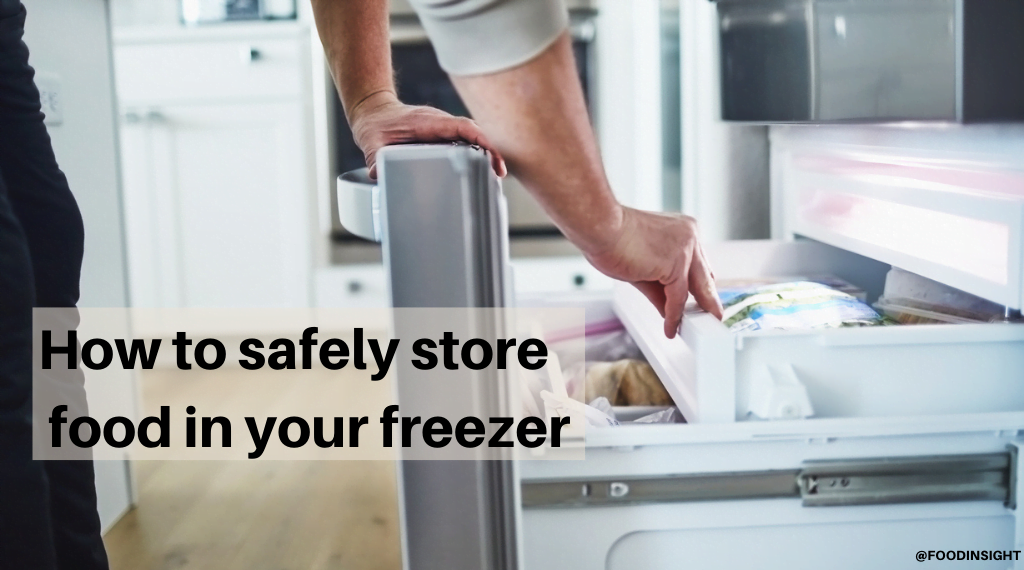July is National Ice Cream Month, and sure enough, July’s hot days often see many of us searching our freezers for frozen treats. As we all know, freezers also house many other foods and beverages that require very cold temperatures to prolong their freshness. But how often do we think about how to properly store our cold and frozen food safely? It’s easy to take our refrigerators and freezers (and the work they do) for granted, but familiarizing ourselves with some important fridge and freezer safety tips can help us better preserve the taste and integrity of our cold and frozen foods in addition to avoiding foodborne illness caused by microbes and preventing food waste due to spoilage.
What’s the best temperature to maintain in a freezer?
We should all periodically check the temperature of our refrigerators and freezers with a special appliance thermometer. Many modern appliance versions have a built-in thermometer that display internal temperatures and sound an alarm if a temperature begins to change. For a quick reference, you should keep your refrigerator at 40 °F or below and your freezer at 0 °F or below. Ensuring proper temperatures in your refrigerator and freezer helps support food safety as well as maintain taste, freshness, and the cooking reliability of your perishable foods and beverages. In addition, proper storage supported by correct temperatures in your refrigerator and freezer helps avoid food waste. Improperly stored food can spoil quickly and thus need to be discarded earlier than if it had been stored correctly. The refrigerator and freezer storage chart found in this tip sheet provided by the Food and Drug Administration includes safe storage times for many widely used foods. In addition, the FDA advises that all food should be examined for spoilage regardless of the dates on the packaging. For more specific refrigeration and freezing guidelines, consult this handy chart.
When should foods in the freezer be discarded?
For all sections of the refrigerator and freezer, the time to clean out stored food items depends on the directions on each item’s packaging and their date labels, also called “open dating” labels. These labels inform consumers of the date by which to consume a food product at its best quality. Label dates do not necessarily indicate safety of consumption (except in the case of infant formula products, the consume-by dates of which are regulated by the federal government). Rather, in general, a “Best if Used By/Before” date indicates when a product will offer its best flavor and peak quality—not when it should be safely purchased or eaten by.
In contrast, a product’s “Sell-By” date tells a store how long to display the product for sale for the purposes of inventory management. Like a use-by date, a sell-by date is not necessarily a safety date. Finally, a “Freeze-By” date indicates when a product should be frozen to maintain its peak quality—it, too, is neither a purchase or safety date.
What are the best practices for cleaning freezers and refrigerators?
According to the US Department of Agriculture (USDA), these are the best steps for cleaning your fridge and freezer:
- Dispose of any spoiled food. If you are not sure if something is still good, it is better to toss it out than take a chance—practice caution to avoid foodborne illness.
- Items that are good and are being stored in the refrigerator and freezer can be moved to an area that you aren’t yet cleaning and sanitizing. Also, foods can be placed on clean kitchen surfaces for a short amount of time (~30 minutes) as you clean. USDA suggests, “Never leave food out of refrigeration over 2 hours. If the temperature is above 90 °F, food should not be left out more than 1 hour.”
- Remove shelves, ice trays, and other compartment dividers. Wash them thoroughly with hot water and a detergent (such as dish soap). All items can then be rinsed with a sanitizing solution (such as one tablespoon of unscented, liquid chlorine bleach per gallon of water).
- The interior walls of the refrigerator and freezer, including the door and gasket (door seal), can be washed with hot water and baking soda. Afterwards, you should rinse these areas with a sanitizing solution, as above.
- Lastly, leave your refrigerator and freezer doors open for about 15 minutes to allow free air circulation. Ensure that both compartments have returned to their correct temperatures (see above) after you’ve closed them (and before re-filling them with food).
Remembering these tips will help keep your refrigerated and frozen foods safe while avoiding food waste and foodborne illness due to improper storage. In the meantime, we hope you enjoy all the ice cream and other frozen treats you desire during these hot months—and maybe even later in the year! After all, who says frozen treats are only for summer?
